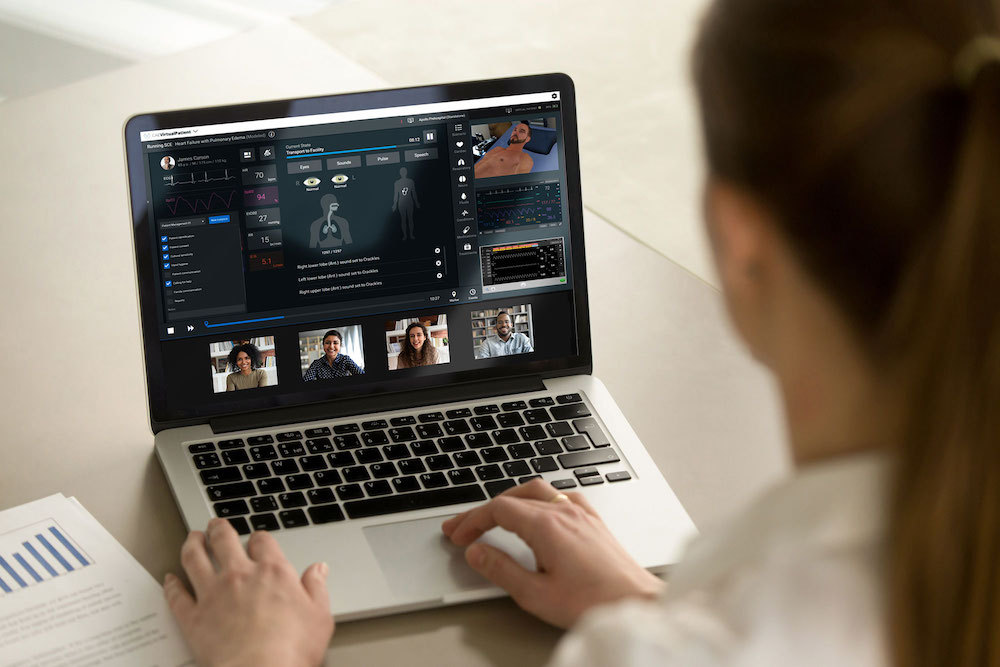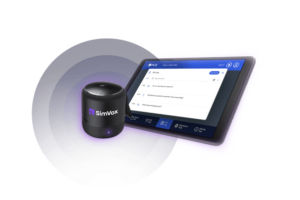Body Interact
Body Interact is a cutting-edge medical simulation tool created by the company Take the Wind (TTW) for medicine and nursing, which uses virtual patients for problem-solving and clinical reasoning. The tool also allows for the creation of custom-made scenarios perfect for healthcare simulation programs looking to provide safe, affordable, and repetitive virtual patient engagements.
Take the Wind was founded in January 2008 by Teresa Pinto and Pedro Pinto, and focuses on technology for clinical education. With a commitment to excellence in healthcare education, TTW operates across Europe, Latin America and the United States. The company’s clients include major scientific societies, hospitals, medical schools, nursing schools and continued medical education providers as well as top-10 pharma companies in more than 35 countries.
The company’s vision is to be the most reliable, engaging and widely-adopted clinical education system in the world. With a mission to empower healthcare professionals and learners toward reducing the impact of clinical errors, every day and everywhere, TTW produces a set of electronic co-decision aids, science-based 3D movies and an interactive digital simulator for problem-solving and clinical reasons: Body Interact.
Sponsored Content:
About Body Interact
Through a technological advanced design, Body Interact is specifically able to deliver cutting-edge nursing simulation solutions and continuously create value for TTW clients and business partners. In a safe educational environment that is similar to the real world, Body Interact can be used to promote a structured cognitive approach for the appraisal of clinical related errors and for skills improvement. This is important because correctly diagnosing and treating patients involves knowledge, skills, attitudes and behaviors.
As diagnoses are often carried out under time pressure, distributed cognition, and within financial constraints, the Body Interact clinical system enables creative didactic and interdisciplinary approaches. These ways of learning greatly enhance competency-based education, helping learners become clinical thinkers, analytical problem solvers and reflective learners. Body Interact aspects of focus, such as perception, reasoning, interpretation, judgment and decision-making, help ensure patient safety across the healthcare experience is promoted.
Sponsored Content:
Another element believed by TTW to be critical in the learning process is emotion. For this reason, a sensorial and gaming design has been incorporated into the Body Interact product to help learners simulate emotional engagement. Understanding cognitive processes can improve the quality of decisions, for example, on how to manage risk, especially under time pressure. This is why the ability to examine and compare and challenge alternative choices is essential during the learning process. According to TTW, when the learning fits the cognitive structures, information effectively acquired and retained in the long-term. Additionally, what is learned and put into clinical practice creates an impact on the learner, bridging the gap between theory and clinical contexts in a controlled and safe environment. This is how the Body Interact clinical system helps healthcare learners to feel prepared to begin their exposure to the real-life clinical environment.
Body Interact Clinical Education Product Features
The Body Interact clinical system helps learners obtain information through virtual patients in expert-reviewed scenarios. The scenarios themselves range from the simplest tasks to the rarest, and help engage learners physically and emotionally. By providing instant debriefing material to reinforce key concepts, Body Interact is able to offer corrective guidance, alert for errors and suggest alternative options. At the end of each scenario, learners are given the option to restart the case, and do so as many times as necessary. This repetitive case learning helps ensure that the material is mastered, and able to be reflected on in the field
Of the material included with Body Interact, specialities covered include allergy/immunology, cardiology, endocrinology, gastroenterology, infectious diseases, internal medicine, nephrology, neurology, oncology, obstetrics/gynecology, orthopaedics, pediatrics, pulmonology, toxicology, trauma, urology and vascular diseases. Learners can design their own diagnosis and treatment plans using Body Interact. Just as in the real world, there is no predefined path limiting or forcing a learner’s actions.
At the beginning of each interactive scenario, learners will see a brief description of the patient’s clinical history. The time for each scenario can be adjusted according to learning objectives. Then, when taking a patient’s history, learners can ask dozens of questions on a range of different topics. Just like real patients, virtual patients may be aware or confused, agitated or unconscious or even complain.
During a physical examination of a virtual patient, Body Interact follows the “ABCDE approach,” meaning that learners are tasked with examining airway observation, breathing, circulation, disability and exposure. Then, using real-time vital parameters monitors, learners can determine a virtual patient’s overall condition. Everything is connected: so if the patient deteriorates, all related outcomes will re-adjust.
Lastly, learners can use Body Interact to request additional exams. Further examinations can help learners come to a diagnosis for treatment plan, and often include lab tests, electrophysiology, imaging and decision aids. When a diagnosis is determined, the product allows for the administering of medications. A complete set of drugs and fluids are available to be selected by category, administration mode and doses. Any given medication will have real-time effects on the patient and will alter their health condition.
First, learners must decide which type of medication would be most effective: oral, intravenous bolus, central intravenous bolus or rectal. Examples of medications which can be administered using Body Interact are Acetylsalicylic acid, fentanyl, morphine and more. Doses typically are either 500 mg, 650 mg, 1000 mg or 1500 mg. Note, there are also plenty of intervention options to be applied, from catheters or defibrillation to chest compressions, oxygen or transfusions. For instance, learners may change patient’s position to reduce shortness of breath.
After these decisions have been made, if a learner believes intervention from a specialist is necessary, they can simulate a call with one to ask for advice, perform specific interventions or to obtain authorization for a procedure.
Overall, the feedback provided by Body Interact is the way a learner will continuously improve their understanding and is key to their success. The timeline report provides a detailed sequence of actions taken during the clinical simulation. By checking their own performance metrics in accordance to the well-established guidelines, learners will determine ways to better themselves and strengthen their ability to perform in a healthcare scenario.
Body Interact Latest News

UbiSim’s Intuitive Editor Creates Meaningful Virtual Reality Simulations for Nursing Students

Transforming Healthcare Simulation with Learning Engineering for Remote and Distance Education

Creating the ‘Always Learning’ Virtual Patient

VirtualPT Clinician Remotely Trains Physical Therapist Learners

New Comprehensive List of Healthcare Simulation Vendors Page

MD Shares Views on Strongest Digital Patients Available from the Healthcare Simulation Market | 2021 Edition

VirtaMedEd: Delivering Simulation Training Across Europe
Learn more by Visiting the Body Interact Website!
Sponsored Content:

















